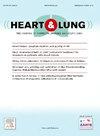The association between atherogenic index of plasma and cardiovascular disease in hypertension: a cross-sectional and longitudinal study
IF 2.6
4区 医学
Q2 CARDIAC & CARDIOVASCULAR SYSTEMS
引用次数: 0
Abstract
Background
The use of low-density lipoprotein (LDL)-lowering drugs has reduced cardiovascular disease (CVD) risk significantly, but residual risk from dyslipidemia remains. Thus, exploring comprehensive lipid indices to assess and predict the impact of the lipid profile on CVD is necessary.
Objective
This study intends to explore the association of atherogenic index of plasma(AIP) with CVD in hypertension.
Methods
This post hoc analysis used data from the Systolic Blood Pressure Intervention Trial (SPRINT). Logistic regression and Cox proportional hazards regression were applied to explore the relationship between AIP and CVD, with subgroup analyses conducted. Non-linear relationships were also examined through trend analysis.
Results
In the cross-sectional study (n = 9323), AIP was positively correlated with clinical CVD(OR, 1.58 [95 %CI, 1.23, 2.04]), and the trend tests were significant(p<0.05). This positive association exists in different subgroups. In the longitudinal study(n = 8458), AIP was significantly and positively correlated with primary outcome(HR 1.62, 95 %CI 1.15, 2.27), CVD death(HR 2.45, 95 %CI 1.04, 5.77), myocardial infarction(HR 1.97, 95 %CI 1.15, 3.37) and peripheral arterial disease(HR 2.52, 95 %CI 1.31, 4.87). Trend tests were significant for the primary outcome, myocardial infarction, and peripheral arterial disease (p < 0.05), with positive correlations observed across most subgroups.
Conclusion
The level of AIP is positively correlated with clinical CVD in cross-sectional study. Moreover, in the longitudinal study, the higher the level of AIP, the greater the risk of subsequent adverse cardiovascular events(primary outcome). This positive correlation exists independently of MI and PAD events.
高血压患者血浆动脉粥样硬化指数与心血管疾病之间的关系:横断面和纵向研究
背景低密度脂蛋白(LDL)降低药物的使用显著降低了心血管疾病(CVD)的风险,但血脂异常的残留风险仍然存在。因此,探索综合脂质指标来评估和预测脂质状况对心血管疾病的影响是必要的。目的探讨高血压患者血浆动脉粥样硬化指数(AIP)与心血管疾病的关系。方法采用收缩压干预试验(SPRINT)的数据进行事后分析。采用Logistic回归和Cox比例风险回归探讨AIP与CVD的关系,并进行亚组分析。通过趋势分析也检验了非线性关系。结果横断面研究(n = 9323), AIP与临床CVD呈正相关(OR, 1.58 [95% CI, 1.23, 2.04]),趋势检验差异有统计学意义(p<0.05)。这种积极的联系存在于不同的子群体中。在纵向研究中(n = 8458), AIP与主要结局(HR 1.62, 95% CI 1.15, 2.27)、心血管疾病死亡(HR 2.45, 95% CI 1.04, 5.77)、心肌梗死(HR 1.97, 95% CI 1.15, 3.37)和外周动脉疾病(HR 2.52, 95% CI 1.31, 4.87)呈显著正相关。趋势检验在主要结局、心肌梗死和外周动脉疾病方面具有显著性意义(p <;0.05),在大多数亚组中观察到正相关。结论横断面研究显示AIP水平与临床CVD呈正相关。此外,在纵向研究中,AIP水平越高,随后发生心血管不良事件的风险越大(主要结局)。这种正相关性独立于心肌梗死和PAD事件存在。
本文章由计算机程序翻译,如有差异,请以英文原文为准。
求助全文
约1分钟内获得全文
求助全文
来源期刊

Heart & Lung
医学-呼吸系统
CiteScore
4.60
自引率
3.60%
发文量
184
审稿时长
35 days
期刊介绍:
Heart & Lung: The Journal of Cardiopulmonary and Acute Care, the official publication of The American Association of Heart Failure Nurses, presents original, peer-reviewed articles on techniques, advances, investigations, and observations related to the care of patients with acute and critical illness and patients with chronic cardiac or pulmonary disorders.
The Journal''s acute care articles focus on the care of hospitalized patients, including those in the critical and acute care settings. Because most patients who are hospitalized in acute and critical care settings have chronic conditions, we are also interested in the chronically critically ill, the care of patients with chronic cardiopulmonary disorders, their rehabilitation, and disease prevention. The Journal''s heart failure articles focus on all aspects of the care of patients with this condition. Manuscripts that are relevant to populations across the human lifespan are welcome.
 求助内容:
求助内容: 应助结果提醒方式:
应助结果提醒方式:


